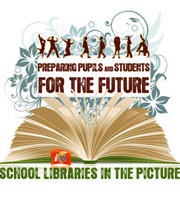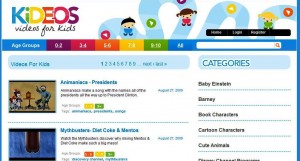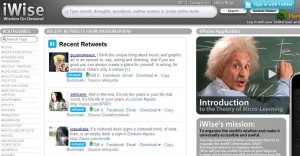Google Apps for Education provide a number of free tools for educational institutions.
Here is an article by David Nagel of The Journal which explains more:
Google Quadruples Students Using Apps for Education
By David Nagel
09/09/09
Google reported this week that the number of students using its Google Apps for Education Edition productivity and collaboration tools on campus has just about quadrupled over this time last year.
According to a blog entry posted this week by Miriam Schneider and Jason Cook of the Google Apps Education Edition team, more than 5 million K-12 and higher education students are actively using Google Apps on campus. They said the number has increased by 400 percent since the beginning of the fall semester in 2008. The number represents “thousands of schools in more than 145 countries,” according to the blog post.
To commemorate the milestone, Google has launched a new site that provides information, resources, and video and text case studies on higher education campuses and K-12 schools, districts, and collectives that have adopted Apps for Education. (Case studies range from Northwestern University, Arizona State University, and University of Southern California to New York City Intermediate School 339, Maine Township High School District, and Prince George County Public Schools.)
Further information can be found here.
Another article by Lisa Nielsen explains more:
Get Going with Google Apps In Your School by Lisa Nielsen
August 30, 2009Cross posted at The Innovative EducatorAs a Google Certified Educator I am often asked by innovative educators how they can get started using Google Apps. As many teachers know, Google Apps Education Edition is a free suite of hosted communication & collaboration applications designed for schools and universities. (See the top 10 reasons to switch your school to Google Apps.)
Though I know Google is a valuable tool, when faced with this question, I first ask, “Why Google Apps?” This is important to consider as the goals and objectives must come before the tool. Here is a recent response I received to that question:
“We’re looking for a school web site that is enhanced by the tools that Google seems to offer.As a school, we’d like to be able to communicate with students and parents about assignment deadlines and events, on a general school-wide level as well as for individual classes. We’d like email accounts for students and teachers, calendars, class web pages. We are also interested in using Google docs as a means of encouraging collaboration among students during group projects, lab activities, etc. I think there are a lot of applications to our school.
We are on paid site right now, but I have heard a lot of good things about Google Apps for Education. It seems more user-friendly/intuitive since Google is something the kids (and staff) are used to working with. Not to mention that it’s free.”
This school seems to have some great reasons for using Google Apps. Now that the stage is set, here is how I recommend getting started.
GET READY
Read the Quick Start Guide
The Education Edition is engineered to help schools organize the wealth of knowledge that lives inside schools. This guide will assist a full-scale deployment of Google Apps.View Tutorials & Tips
View videos and tutorials on how you can use Google Apps at your school and in the classroom.Sign Up for Free Email with Message Security in Google Apps Education Edition for K-12s
Keep your students safe with Google Message Security, offered free to current and new K12 Google Apps schools that sign up before July of 2010. Customizable inbound and outbound filtering based on content or senders – you make the rules.Set Up Sites for Teachers
Check out the new Sites for Teachers page to see how teachers, students and administrators are using Google Sites to create their class sites, organize school trips, and run school projects.Help Students Search Effectively
Educators often say that they could use some help to teach better web search skills in the classroom and make sure Google is used well and to its full potential. Google Certified Teachers have develop a set of nine modular and practical lessons to help educators do just that.Review the Tools for your classroom
Become familiar the products that comprise Google tools for educators including staples like Blogger, SketchUp, Docs, Book Search , and iGoogle and their incredible newly featured products like the Custom Search Engine.Take a look at Classroom Activities and Tips Posters
Be sure to check out some examples of teacher work in the new classroom activities section and check out the handy tips posters, which you can print out and hang in your classrooms, computer labs and libraries.GET SET
Once you’ve done your homework, it’s time to start connecting with others doing the same work. These will be your best resources to becoming successful using Google Apps for Educators. Here is how you do this.Get on the map
Find other Google Apps educators & students around the world. When you visit the Mapyou will find schools, along with their url, that are using Google. Figure out the key people at that school. Connect and visit…
Become a Part of the Google Teacher Community
Here you will find the Google for Educators Discussion Groupdesigned to keep you updated on Google’s K-12 Education initiatives. The group has become the home of a vibrant community of educators. In this space educators start discussions with fellow teachers; share ideas about innovation in education; ask questions about where to find teaching resources; tell colleagues about curricula you’ve created that have worked really well and more. You will also find examples of classroom activities using Google products.GO!
You are now ready to begin using Google Apps at your school. You will want to introduce this to your colleagues through a meeting or email. When doing this be sure to include your school goals and objects around why you are doing this. Have some simple ways they can get started now. Share some ways you plan to measure success.Celebrate Your Success and Get on The Map
Once you launch this work in your school, add yourself to the Google Community Map publicly with your colleagues. Share your success by commenting here. Invite others to your school (physically or virtually) to see the great work you are doing.
Lots of things to investigate here. Whatever you think of Google, you have to admit that they have a great suite of tools.




